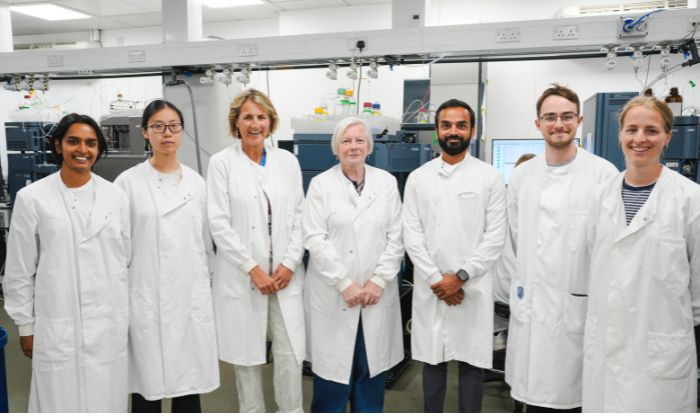Team inspired by ‘super smeller’ could detect Parkinson’s disease early
23 Jul 2025
Non-invasive skin swabs could detect neurodegenerative disorder up to seven years before symptoms appear.

A new study has revealed promising progress in developing a non-invasive sampling method to detect early signs of Parkinson’s disease – up to seven years before motor symptoms appear – by analysing the chemical makeup of skin.
The research, published in the journal, npj Parkinson's Disease, demonstrates that compounds or ‘volatiles’ found in sebum — the oily substance produced by our skin —hold key biomarkers for identifying Parkinson’s in its earliest stages.
Using a technique known as Thermal Desorption-Gas Chromatography-Mass Spectrometry (TD-GC-MS), University scientists, in collaboration with Salford Royal NHS Trust and the Medical University of Innsbruck, analysed skin swabs from participants with Parkinson’s, healthy volunteers, and those with a sleep disorder called isolated REM Sleep Behaviour Disorder (iRBD) – a known early warning sign of Parkinson’s disease.
The results showed that people with iRBD had distinct chemical profiles in their sebum that were different from healthy individuals, but not yet as pronounced as those with established Parkinson’s disease. This supports the idea that Parkinson’s disease leaves a detectable trace on the body well before physical symptoms appear.
Joy Milne – the ‘super smeller’ who inspired the research – was also able to distinguish swabs from people with iRBD from the control group and Parkinson’s patients. Intriguingly, she was able to detect both diseases in two of the swabs that came from iRBD individuals, who were later diagnosed with Parkinson’s at their next clinical appointment, after sampling.
Professor of Mass Spectrometry, Perdita Barran said: “This is the first study to demonstrate a molecular diagnostic method for Parkinson’s disease at the prodromal or early stage. It brings us one step closer to a future where a simple, non-invasive skin swab could help identify people at risk before symptoms arise allowing for earlier intervention and improved outcomes.”
Lecturer in Analytical Measurement Sciences, Dr Drupad Trivedi built a model that examined the markers in a longitudinal sampling study and collected samples from Parkinson’s patients over a three-year period. He found patterns that suggest this method can also be used to map the progression of the disease, which could have use in refining treatment options and improve patient outcomes.
"Our goal is to develop a reliable, non-invasive test that helps doctors detect Parkinson’s earlier, track its progression, and ultimately improve patient outcomes,” he explained.
He added that the team were keen to hear from other hyperosmic individuals, potential ‘super smellers’ like Joy, whose remarkable sense of smell could help extend its work to detect other diseases with potential odour signatures. To get involved, email Dr Trivedi at:
For more details of the study, visit:
